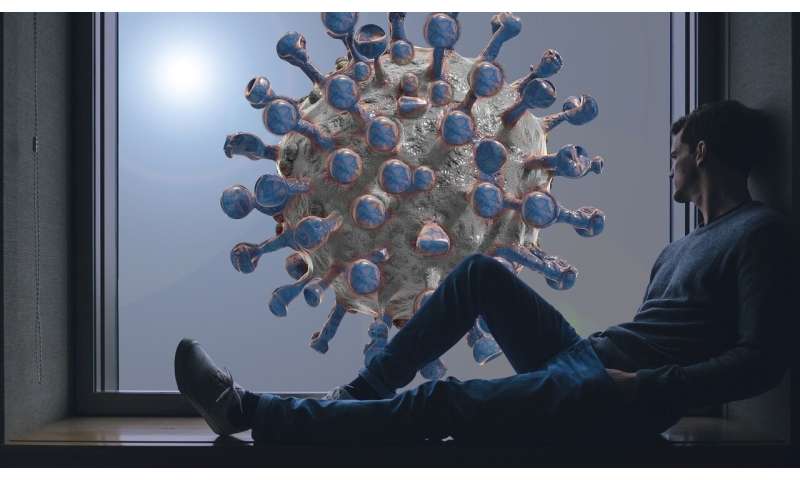
In a perfect scenario, individual COVID-19 testing would be widely and readily accessible. In reality, tests are still in short supply, and likely cases far outnumber testing capacity, making the prevalence and trajectory of the disease hard to measure.
But Yale researchers are developing creative ways to track the spread of the virus—through algorithms, environmental sampling, genome sequencing, and a process for measuring antibodies in the blood known as serology. Researchers hope these efforts, many of which are still in their early stages, will yield valuable information about the scope of the virus’ spread, and allow them to estimate when life as we used to know it might resume.
“This is a new virus that never appeared in humans before a few months ago, and we’re racing against it,” said Dr. Ellen Foxman, assistant professor of laboratory medicine and immunobiology at Yale School of Medicine. “Tests that would take two to three months to develop—we’re trying to develop in two to three weeks.”
Foxman is assistant director of two clinical labs—the Clinical Virology Lab, led by Dr. Marie-Louise Landry, which developed COVID-19 tests that Yale New Haven Hospital is using to test 200 people per day; and the Clinical Immunology Lab, which is developing serology tests. She’s also part of Yale’s COVID-19 Lab Working Group, along with Landry, epidemiologist Nathan Grubaugh, immunobiologist Akiko Iwasaki, and Albert Ko, department chair and professor of epidemiology at Yale School of Public Health.
“Right now, we are laying the groundwork and setting up cohort studies,” said Ko. “This is an entirely new pathogen. We need to know how it infects people, why they are sick, and, if they get immunity, whether or not they can be re-infected.”
Back in February, as concern about the virus intensified in the U.S., faculty experts at Yale were called on to predict the local spread of the disease.
Saad Omer, director of the Yale Institute for Global Health and part of a COVID-19 advisory group for Yale President Peter Salovey, developed an algorithm to assess the likely local spread of the virus. This work helped university leaders decide to move classes online for the duration of the spring semester and to institute work-from-home protocols.
“We had to figure out—where does the information trigger a decision?” said Omer, associate dean of global health research and professor of medicine (infectious diseases) at Yale School of Medicine, and the Susan Dwight Bliss Professor of Epidemiology at Yale School of Public Health.
Omer, who has studied respiratory diseases and vaccines across the globe, designed the algorithm based on the travel and commuting locations of faculty, students, and staff, and used that to estimate possible spread among the Yale community.
“I have seen outbreaks happen,” said Omer. “In a response, being ahead of the curve is important.”
As confirmed cases began emerging, Yale environmental engineer Jordan Peccia began researching another means of assessing the virus’ reach in the New Haven community—environmental sampling of local wastewater, which contains evidence of any number of pathogens and toxins. The method has even been used to reveal information about drug use in a city, Peccia said.
https://youtube.com/watch?v=UTzUtW3qs7M%3Fcolor%3Dwhite
“Even when there were no confirmed cases in the state, we could have seen it in the wastewater,” said Peccia, the Thomas E. Golden Jr. Professor of Chemical & Environmental Engineering.
He and his team are collecting daily samples from wastewater sites in New Haven, transferring samples to a minus-80-degree freezer in his lab, and extracting RNA to determine the concentration of the coronavirus in the wastewater. With the help of epidemiologists, they will then measure those concentration numbers against the numbers of confirmed Covid-19 cases to derive an estimate for the likely number of actual cases in the broader New Haven population.
“We’d like to use this data to help indicate where we are in the epidemic,” Peccia said. “We’re also trying to find an innovative way to develop an early warning system for disease spread in the population.” He expects their work to continue through the summer.
“It’s a long game,” Omer said. “We don’t know how many people are actually infected. We don’t know how big a fraction of the population actually develops the disease.”
Local cases of COVID-19 can provide important clues about the path of the virus, Yale researchers have found. Yale’s COVID-19 Lab Working Group is using genome analysis to understand how the coronavirus came to New Haven.
As the virus replicates in a person’s genetic material in order to cause an infection, it often makes a mistake in the copied genetic sequence—”like a typo,” said Mary Petrone, a doctoral candidate in epidemiologist Grubaugh’s lab. These mutations do not change the fundamental nature of the virus, she said, but they allow scientists to infer relationships between outbreaks.
Petrone is co-first author with postdoctoral associate Joseph Fauver on a related study. Published without peer review to make the findings quickly available, the study revealed that nine early COVID-19 cases in Connecticut came from domestic, rather than international, sources, including seven from Washington State.
“An uncontrolled COVID-19 outbreak in one state can seed an outbreak in another,” Petrone said. “Each outbreak across the country must be controlled before the U.S. epidemic can be controlled.”
To better understand how many people have contracted COVID-19—including individuals who were asymptomatic—Yale researchers are also undertaking population-based serology. Foxman, whose lab studies the body’s response to infections, said sampling blood from the general population to look for virus antibodies can generate a much more complete picture of disease spread than point-of-care tests.
She and other clinicians and researchers at Yale are leading efforts to develop serology tests for measuring antibodies and for determining whether those antibodies will block future infection.
Source: Read Full Article
